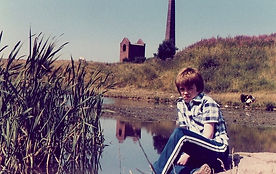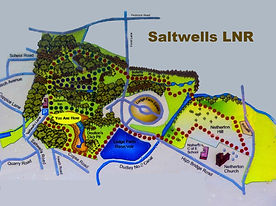
SALTWELLS local nature reserve
local nature reserve
...and surrounding area
All images copyright © M Weaver 2017
ABOUT SALTWELLS LNR
Everyone has their own patch and Saltwells Local Nature Reserve is mine.
As I spend a lot of my spare time strolling around ‘The Saltwells’ with camera in hand – be it in sunshine, rain or snow – I thought why not share some of it with everybody else?
Saltwells LNR is one of the UK’s largest urban nature reserves and is situated approximately 2 miles south of Dudley in the West Midlands. It’s home to many species of woodland bird including treecreeper, green and great spotted woodpecker, goldcrest, nuthatch and the odd buzzard or two can often be seen soaring high above the woods.
In springtime, the Saltwells produces one of the finest bluebell displays to be seen in the local area making it well worth a visit. And who knows, you may even be lucky enough to spot one of the rather elusive muntjac’s that have recently been seen in and around the wood.
Butterflies are also abundant in both spring and summertime, with approximately 25 different species to be found including -
-
brimstone (hibernates, but mainly seen from late feb-late sep)
-
speckled wood (mar-oct)
-
holly blue (typically two broods apr-may and jul-sep)
-
common blue (again two broods, early may-jun and mid jul-sep)
-
red admiral (early mar-late oct)
-
peacock (mar-sep but can be seen any day of the year if warm enough - one was sighted a few days before Xmas Day 2014)
-
gatekeeper (jul-early sep)
-
small heath (typically two broods so can be seen from early may-early oct)
-
small tortoiseshell (mar-sep but again hibernating adults can be seen any time of the year)
-
large skipper (jun-mid aug)
-
small skipper (early jun-late aug)
-
dingy skipper (early may-late jun - scarce, none spotted since 2013)
-
small copper (mid apr-late sep)
-
meadow brown (late may-late sep)
-
ringlet (mid jun-mid sep)
-
comma (hibernating adults can be seen from late feb-oct)
-
orange-tip (early apr-late jun)
-
marbled white (mid jun-late aug)
-
large white (two or even three generations a year so can be seen from mid-apr to late sep)
-
small white (two broods so may be sighted from mid-march to late sep)
-
green-veined white (again two or three generations so on the wing from mid-apr to late sep)
-
painted lady (early apr-late sep - occasional)
-
purple hairstreak (early jul-late aug)
-
green hairstreak (early may-late jun)
-
and, if you know where to look, the less common white-letter hairstreak (mid jul-late aug) - but my lips are sealed!
Me at Saltwells LNR, some 30-odd years ago...


A white admiral was also spotted on a single occasion in July 2010 but it was presumably just passing through as none have since been seen to my knowledge. n.b. The flight periods shown are approximate only and can be dependent on how good, or bad, the weather conditions have been for any particular year - so just keep 'em peeled and tick them all off as and when you visit!
Or, if dragonflies are your 'thing', you might see azure damselflies, common darters, broad-bodied chasers or southern hawkers amongst others. Sixteen species have been recorded at Daphne Pool.
So why not check it out when you next have a spare hour or two. Most of the folk are friendly and you might just be surprised at what’s sat right on your doorstep.
Respect both the wood and its varied wildlife, and enjoy it at your leisure...

<click on map to expand>